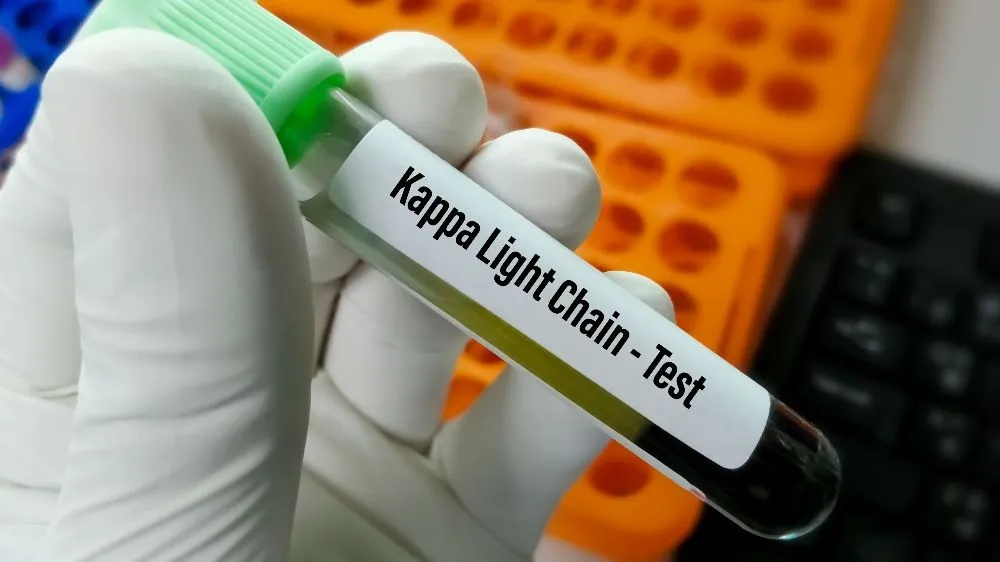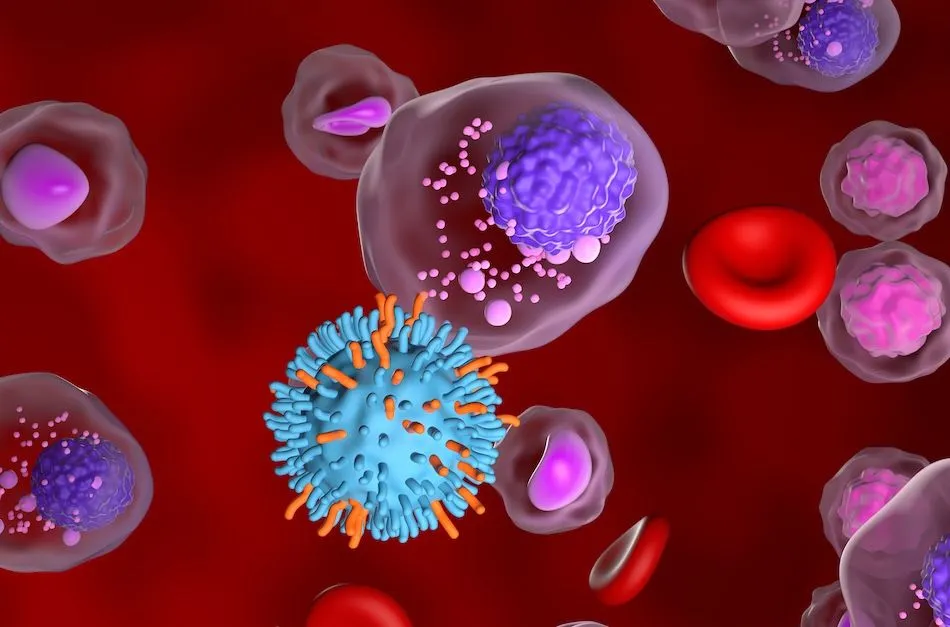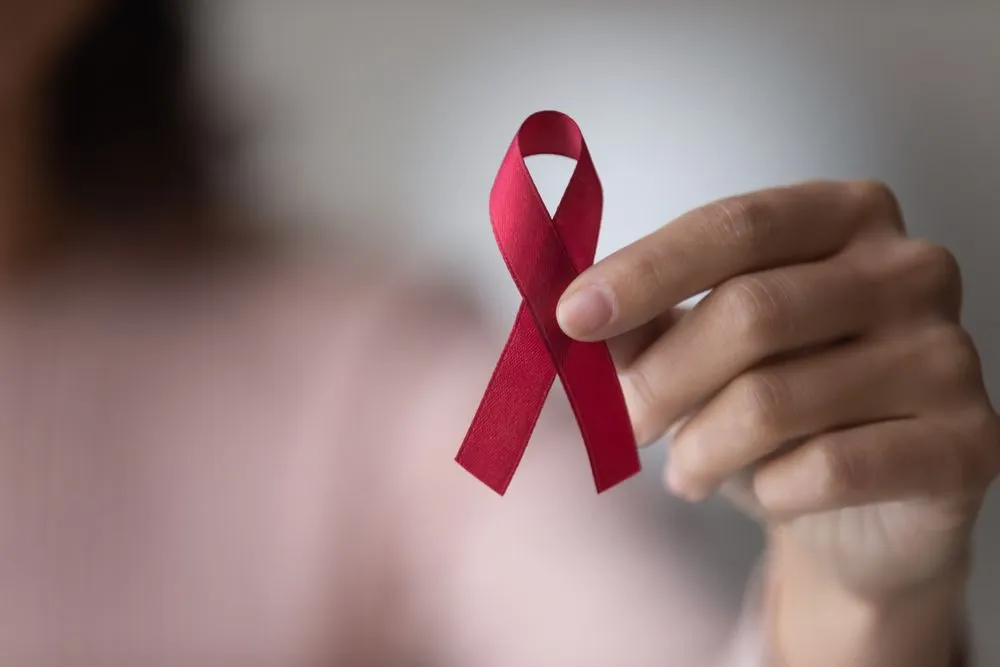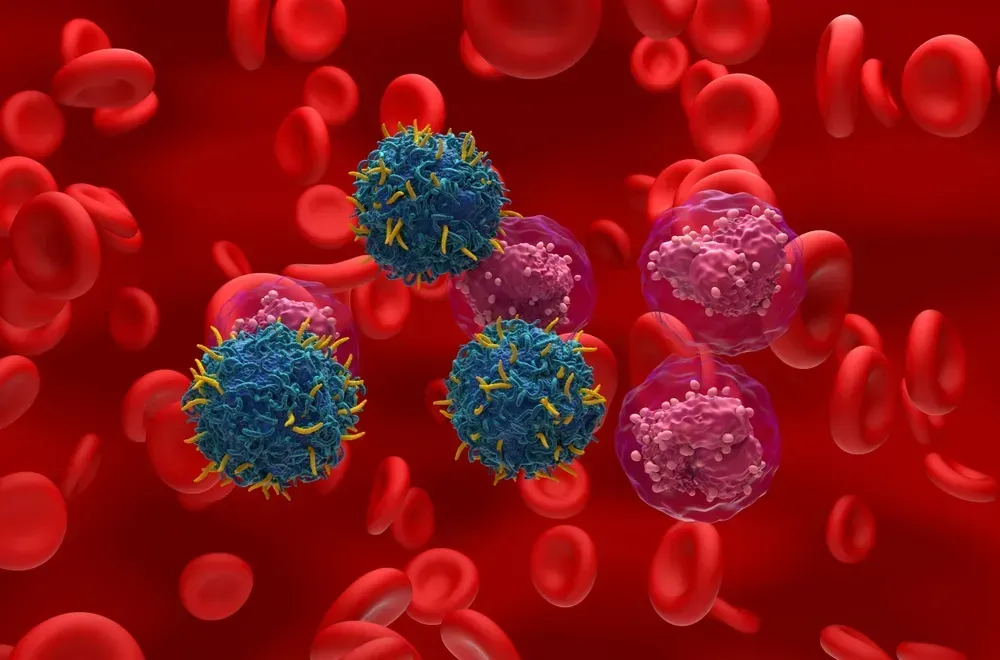HealthTree's Top 5 Myeloma Articles in 2023

Today we highlight the top 5 most popular articles on our HealthTree for Multiple Myeloma News site.
Did you read any of these articles? If not, make sure to visit (or revisit!) them below:
1. Kappa/Lambda Light Chains
In normal circumstances, plasma cells produce antibodies compromising two parts: heavy chains and light chains. These two parts are combined together and secreted into the blood and other places in the body. In addition, plasma cells secrete a small number of light chains that are not attached to the heavy chain (also called free light chains).
In myeloma, plasma cells grow out of control in the bone marrow, crowding out the other cells of the bone marrow. Also, this abnormal plasma cell population (monoclonal plasma cells) secrete excessive heavy chains and light chains (monoclonal protein or m-spike), including the complete immunoglobulin and/or the free light chains. Consequently, other immunoglobulins secreted by normal plasma cells are reduced, leading to a deficient immune system.
Read more here: Kappa and Lambda Light Chains
2. The Best Time to Take Dexamethasone and Why
I am often asked, “When is the best time of day to take my dex: morning, mid-day, or bedtime”? Let’s explore the answer from the aspect of normal human physiology.
If we take a high dose of dexamethasone at bedtime, there is still a significant blood level of dex in the morning. When the pituitary discovers there is plenty of steroid in the blood passing by it decreases ACTH production. This tells the adrenal gland not to produce any cortisol in the morning following an evening dex binge.
Read more here: The Best Time to Take Dexamethasone and Why
3. What is the Prognosis of a Multiple Myeloma Patient?
A cancer diagnosis like multiple myeloma can often invoke questions such as, "How long will I live with this disease?" or "What can I expect the quality of life of my loved one to be?"
Now, while there is no current cure for multiple myeloma (although we truly are getting closer as time goes by), the longevity of myeloma patients and their quality of life has significantly increased even within the last 10-20 years.
Read more here: What is the Prognosis of a Multiple Myeloma Patient?
4. What Are CRAB Symptoms of Multiple Myeloma?
We often hear of the term C.R.A.B. in myeloma, but what does that mean? CRAB is the acronym for the most common symptoms of multiple myeloma.
- C: Calcium (elevated) - hypercalcemia
- R: Renal failure
- A: Anemia
- B: Bone disease
Read more here: What are the C.R.A.B Symptoms of Multiple Myeloma?
5. What to Eat if You Have Multiple Myeloma
There aren’t any proven diets to treat multiple myeloma. However, there are specific nutritional strategies that you can use throughout your treatment to strengthen your immune system and prevent infection.
Good eating strategies with myeloma may include: eating small, frequent meals throughout the day, choosing foods that are easy on your stomach, including protein-rich and whole grain-based foods in your diet, eating a variety of fruits and vegetables, staying hydrated, limiting added sugars, and more.
Read more here: What to Eat if You Have Multiple Myeloma
Honorable Mentions
Though technically not "articles" but rather pages on our website, these are also the most popular content on our website.
- Multiple Myeloma Lab Results Explained: This page teaches you how to decipher your myeloma lab results; there are resources you can download to learn more.
- Multiple Myeloma Specialist Directory: Search for a specific myeloma specialist or discover specialists (and treatment centers) in your region.
- How is Multiple Myeloma Diagnosed?: Learn what tests are required for a multiple myeloma diagnosis and why each is necessary.
- What is Multiple Myeloma?: Many newly diagnosed patients and loved ones start from the very beginning. What is multiple myeloma?
Thank you for following our news site! We promise to keep you informed in the coming year with more myeloma news and research that's important to you.
Today we highlight the top 5 most popular articles on our HealthTree for Multiple Myeloma News site.
Did you read any of these articles? If not, make sure to visit (or revisit!) them below:
1. Kappa/Lambda Light Chains
In normal circumstances, plasma cells produce antibodies compromising two parts: heavy chains and light chains. These two parts are combined together and secreted into the blood and other places in the body. In addition, plasma cells secrete a small number of light chains that are not attached to the heavy chain (also called free light chains).
In myeloma, plasma cells grow out of control in the bone marrow, crowding out the other cells of the bone marrow. Also, this abnormal plasma cell population (monoclonal plasma cells) secrete excessive heavy chains and light chains (monoclonal protein or m-spike), including the complete immunoglobulin and/or the free light chains. Consequently, other immunoglobulins secreted by normal plasma cells are reduced, leading to a deficient immune system.
Read more here: Kappa and Lambda Light Chains
2. The Best Time to Take Dexamethasone and Why
I am often asked, “When is the best time of day to take my dex: morning, mid-day, or bedtime”? Let’s explore the answer from the aspect of normal human physiology.
If we take a high dose of dexamethasone at bedtime, there is still a significant blood level of dex in the morning. When the pituitary discovers there is plenty of steroid in the blood passing by it decreases ACTH production. This tells the adrenal gland not to produce any cortisol in the morning following an evening dex binge.
Read more here: The Best Time to Take Dexamethasone and Why
3. What is the Prognosis of a Multiple Myeloma Patient?
A cancer diagnosis like multiple myeloma can often invoke questions such as, "How long will I live with this disease?" or "What can I expect the quality of life of my loved one to be?"
Now, while there is no current cure for multiple myeloma (although we truly are getting closer as time goes by), the longevity of myeloma patients and their quality of life has significantly increased even within the last 10-20 years.
Read more here: What is the Prognosis of a Multiple Myeloma Patient?
4. What Are CRAB Symptoms of Multiple Myeloma?
We often hear of the term C.R.A.B. in myeloma, but what does that mean? CRAB is the acronym for the most common symptoms of multiple myeloma.
- C: Calcium (elevated) - hypercalcemia
- R: Renal failure
- A: Anemia
- B: Bone disease
Read more here: What are the C.R.A.B Symptoms of Multiple Myeloma?
5. What to Eat if You Have Multiple Myeloma
There aren’t any proven diets to treat multiple myeloma. However, there are specific nutritional strategies that you can use throughout your treatment to strengthen your immune system and prevent infection.
Good eating strategies with myeloma may include: eating small, frequent meals throughout the day, choosing foods that are easy on your stomach, including protein-rich and whole grain-based foods in your diet, eating a variety of fruits and vegetables, staying hydrated, limiting added sugars, and more.
Read more here: What to Eat if You Have Multiple Myeloma
Honorable Mentions
Though technically not "articles" but rather pages on our website, these are also the most popular content on our website.
- Multiple Myeloma Lab Results Explained: This page teaches you how to decipher your myeloma lab results; there are resources you can download to learn more.
- Multiple Myeloma Specialist Directory: Search for a specific myeloma specialist or discover specialists (and treatment centers) in your region.
- How is Multiple Myeloma Diagnosed?: Learn what tests are required for a multiple myeloma diagnosis and why each is necessary.
- What is Multiple Myeloma?: Many newly diagnosed patients and loved ones start from the very beginning. What is multiple myeloma?
Thank you for following our news site! We promise to keep you informed in the coming year with more myeloma news and research that's important to you.

about the author
Audrey Burton-Bethke
Audrey is a content writer and editor for the HealthTree Foundation. She originally joined the HealthTree Foundation in 2020. Audrey loves spending time with her supportive husband, energetic four-year-old, and new baby.
More on HealthTree Programs
Trending Articles
Upcoming Events




Get the Latest Multiple Myeloma Updates, Delivered to You.
By subscribing to the HealthTree newsletter, you'll receive the latest research, treatment updates, and expert insights to help you navigate your health.
Together we care.
Together we cure.
3x Faster.


















